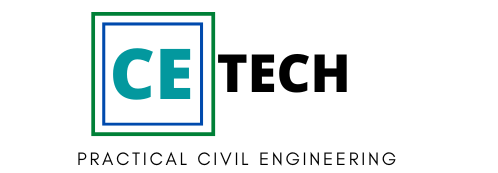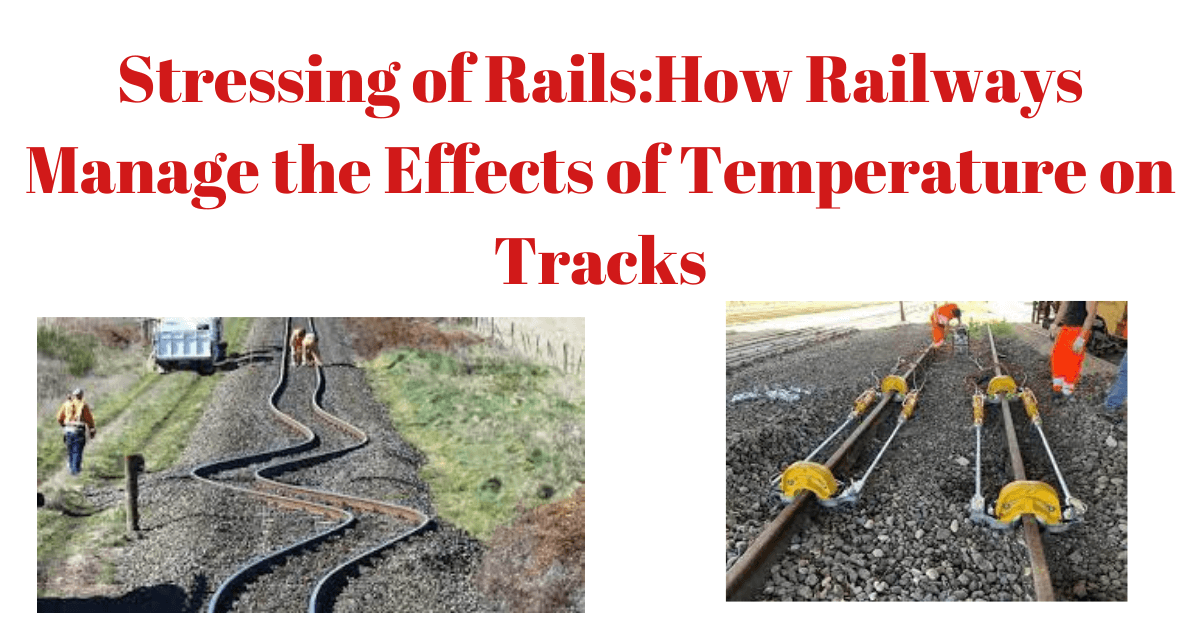The railway network is an essential part of transportation infrastructure, allowing people and goods to travel quickly and efficiently across large distances. However, this infrastructure is subject to a range of environmental stresses, particularly extreme temperatures, which can cause rails to buckle or crack and break and lead to costly and dangerous disruptions. we will explore the process of de-stressing, which is an engineering solution used to prevent these problems.
The effects of extreme temperature changes on railway rails
Firstly, it is important to understand the underlying causes of rail buckling and fracture. Railway steel contracts at low temperatures and expands at high temperatures. In extreme cold, a length of continuous welded rail (CWR) suffers tensile stress, which can cause railway steel to fracture. In extreme heat, a length of CWR suffers compressive stress, which can cause it to buckle laterally. Other factors that affect CWR condition include the state of the track ballast and its shoulders; the type and placement of the sleepers; places of increased shadow such as tunnels and bridges; track consolidation; and, to a lesser degree, the vertical curvature of the tracks.
Engineering solution of destressing or neutralizing rails
To address these challenges, a figure known as the “rail neutral temperature” (RNT) is calculated in the design and installation of CWR. The tensile and compressive longitudinal forces on the CWR are added, and the RNT is the notional temperature when the total equals zero. A similar figure is the “stress-free temperature” (SFT). It is the rail temperature at which it is the same length as in its unrestrained state.
Planning of laying of rails when the actual temperature equals the SFT naturally makes the rail stress free. In other cases, before laying a new track, repairing the track, or changing the sleepers, the rail is mechanically or thermally altered (stressed) so that its length equals the same at a chosen stress-free temperature. This process ensures that the rail can be fixed in place with no thermal forces in effect. The stress-free temperature that is used is dependent on environmental extremes and thus varies with location.
Despite stressing the CWR before installation, a rail may still reach its “Critical Rail Temperature” (CRT). This is the temperature of the rail above which buckling may occur. The CRT may be reached due to disturbance of the ballast, track components, or track geometry. For example, the CRT may be reached due to a removal of a rail section or an Insulated Block Joint (IBJ).
Types of de-stressing or neutralizing rails
Continuous use and changing weather conditions can cause stresses to build up in the rails, leading to various problems such as rail buckling, track misalignment, and fatigue cracks. In order to maintain the stability and safety of the railway track, it is important to regularly carry out destressing of the rails. There are several methods of destressing, and they can be broadly classified into three types: natural de-stressing, mechanical destressing, and thermal destressing. Let’s take a closer look at each type:
Natural Destressing:
- Natural de-stressing is the process of repair or new construction of rails when the timing is planned taking into consideration the optimum actual temperature that equals the SFT(stress-free temperature). However, this may not be realistic because of the urgency of construction needs that span the whole year.
- Mechanical destressing involves the use of specialized equipment to apply pressure to the rails in order to relieve the accumulated stresses. Mechanical destressing involves the use of hydraulic jacks to apply pressure to the rails at specific locations along the track. The length is extended to the length that is required for achieving a stress-free rail for a certain temperature.
- Thermal destressing is the process of using heat to expand the rails and achieve a stress-free rail. This method involves heating the rails using a special machine that blows hot air onto the rails. The rails are heated to the SFT and the rail becomes stress-free.
Destressing of rails is a critical maintenance activity that ensures the long-term stability and safety of the railway track. Natural, mechanical, and thermal destressing are the three main methods used to achieve this. The choice of destressing method depends on various factors such as cost, speed, effectiveness, and availability of equipment. However, regardless of the method used, regular destressing of rails is essential for maintaining the safety and reliability of the railway network.
How stressing of rails is regulated
If a section of rail must be replaced urgently, a stress check is performed later on. A stressing engineer measures the rail section to be removed and places indicators with marks on the foot of the rails. After the rail section is cut out, its first stress-free temperature is determined. The new rail section is cut and replaced and then welded at one end. A “stressing kit” (hydraulic rail tensor) or other method is used to adjust the other end and make the joint ready for welding.
A more recent engineering solution is “VERSE” testing equipment produced by the company, Vortok in 1998. It allows rail engineers to measure stress-free temperature without removing a section of rail. Vortok is Pandrol Vortok now.
It is important to note that stressing is not the only solution to rail buckling. Another method is to introduce local speed restrictions when remote monitoring systems indicate that a section of the track might be expanding too much and could cause problems. Slower trains cause lower forces on the track, reducing the chance of buckling.
However, rails sometimes buckle even with prevention in place, and this means that the line needs to be closed and the track repaired before trains can run again. This can disrupt journeys.
Calculation of destressing or neutralizing of rails
Destressing or neutralizing also called stressing of a continuous railway track involves adjusting the rails to a stress-free state at an actual or calculated rail temperature within the neutral temperature range.
Neutral temperature is the determined rail temperature around which the rails must be stress-free. Neutral temperature is also called also design neutral temperature and is fixed by railway infrastructure authorities. It is the mid-temperature between the highest and the lowest temperature of the rail in the area concerned.
The neutral temperature range is the range between the highest and lowest actual temperature of the rail at a location.
In Sweden, the neutral temperature range is calculated from the neutral temperature by setting The upper limit of the neutral temperature range to 7 °C higher than the neutral temperature and the lower limit to 3 °C lower than the neutral temperature
From the neutral temperature range, the stress-free temperature is normally taken to be the maximum to ensure the compressive forces are avoided which poses a great risk of damage to rails.
Example of neutral temperature ranges in Sweden
Geographical area Neutral temperature is selected within the range
Skåne and along the west coast 16–20 °C
Other Götaland and southern/eastern Svealand 14–18 °C
Northern Svealand and southern Norrland’s coastal land 12–16 °C
Southern Norrland’s interior and northern Norrland’s coastal land 10–14 °C
Northern Norrland inland 8–12 °
Example of railway stressing calculation
A railway track contractor company is to build a new all-welded track section of 700m with concrete sleepers and Heyback fastening. The fixing of fasteners and the final welding remains is yet to be performed. The SFT for the fully welded track section should be +21oC. The weather forecasts show the rail temperature will be 12oC in both the air and the rail in the coming days.
What neutralizing or de-stressing methods would be possible and how should the contractor do them?
Solution: In this case, we are given the SFT of the rail and the actual rail temperature.
There are three ways of destressing
- Natural- this is when we perform the work at the right temperature and season that aligns with the SFT. In this case, it means we shall wait until the temperature equals SFT.
- De-stressing by elongation. We elongate to the length by extension of E at which the net of forces in the rail will be zero. E = 1000.L. X. T Where E = extension in millimeters L = length of free rail to be adjusted in meters X = 0.0000115 = coefficient of thermal expansion for steel T = difference between the shade rail temperature (actual) and the design neutral temperature in degrees Celcius
- Heat the rail with gas burners to an SFT temperature of 21

